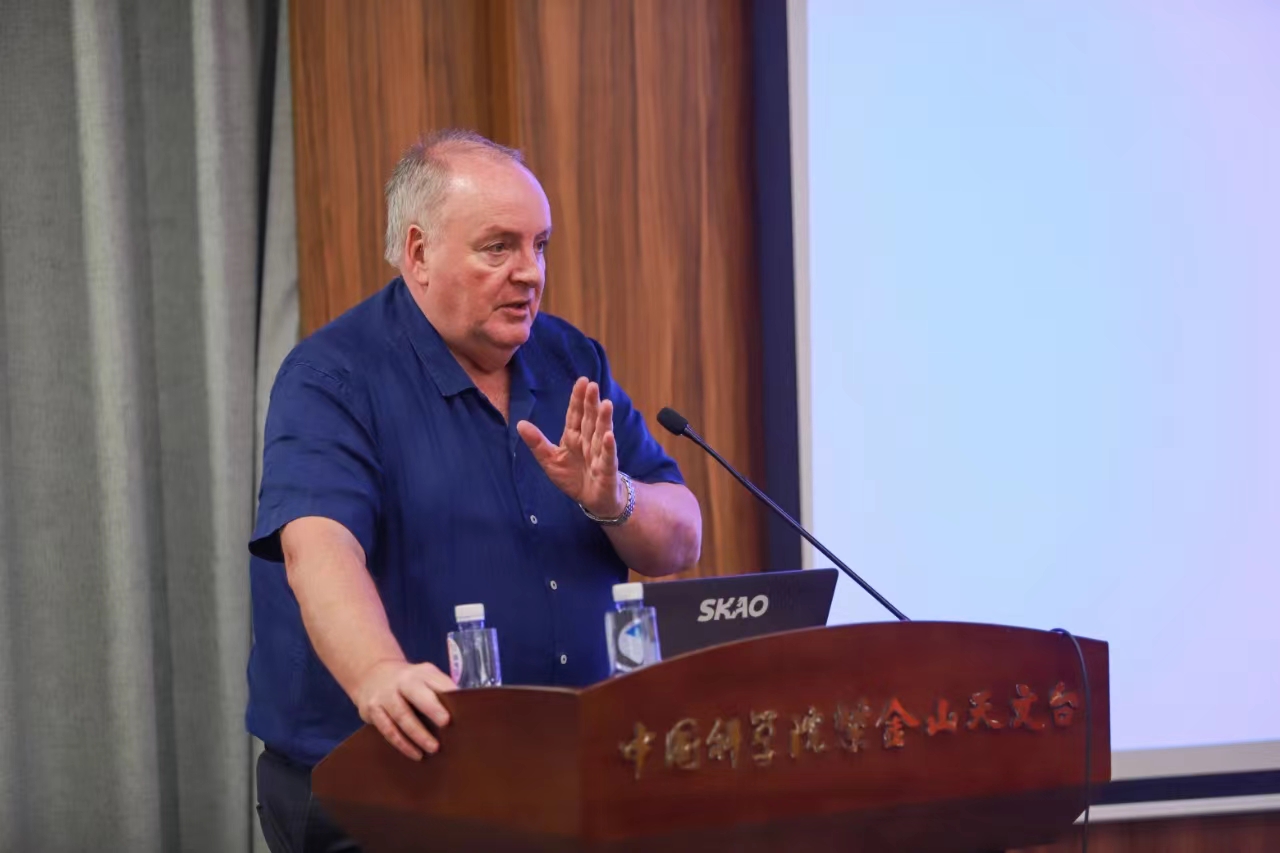Joint Efforts to Build World's Largest Radio Telescope

Philip Diamond speaks at the Purple Mountain Observatory, the Chinese Academy of Sciences. (COURTESY PHOTO)
China was right there in the early conversations about what the future of radio astronomy might look like, and has played a critical role in creating the world's largest and most advanced radio telescope - the Square Kilometer Array (SKA).
Philip Diamond, director general of the SKA Observatory (SKAO), told Science and Technology Daily this during the 11th SKAO Council Meeting.
The SKA is a next-generation radio astronomy-driven facility of big data received via thousands of small antennae spreading over 3,000 km to simulate a single giant radio telescope with a total collecting area of approximately one square kilometer.
It will revolutionize our understanding of the universe and the laws of fundamental physics and answer some of the most fundamental scientific questions, including detecting the epoch of reionization and testing gravity with pulsars.
China's commitment to SKAO
"China is a founding member of the SKAO and contributes eight percent of the budget," Diamond said. China also has significant construction contracts to supply the SKA and is fully participating in the science, engineering and management activities of the organization, he added.
The first mid-frequency dish antenna, designed for the SKA and assembled in Shijiazhuang in north China, has already been sent to South Africa, and the second is on its way, marking a milestone in the SKA construction phase.
Made up of 66 individual panels, the structure stands more than six stories tall and weighs more than 50 tons. With a fully assembled dish in hand, engineers will be able to investigate and resolve issues when the next three dishes are shipped to South Africa and installed on site.
"I visited the factory in Shijiazhuang a few days ago. It's very impressive," Diamond said. "It's an example that the other countries can learn from."
According to Wu Xuefeng, deputy director of the Purple Mountain Observatory, the Chinese Academy of Sciences, China's commitment to the SKAO is systematic and comprehensive.
The Chinese industry and academia have participated in the design and development work of several international SKA design consortia, including the SKA mid-frequency array SKA-Mid. China is also deeply involved in the development of the SKA's core equipment, such as the central signal processing system, the time signal transmission system.
In addition, the Chinese scientific research community attaches great importance to the cultivation of SKAO-related talents. Several graduate students and postdoctoral fellows have been selected to work at the SKA's world-class academic institutions for future SKAO project construction and scientific operation.
International collaboration key for astronomy
Science is fundamentally collaborative on an international scale, especially astronomy, said Diamond.
The SKA is being built by scientists and engineers from 20 countries, and will eventually include some 200 parabolic dishes in South Africa and more than 131,000 tree-like antennas in Australia. Eight other African countries, including Ghana and Kenya, are also hosting some of the system's components.
Launched in Rome in March 2019, with 14 consortium members, the SKAO will be a global observatory, operating two telescopes on three continents on behalf of its member states and partners.
Diamond believes that the power of collaboration made the SKA possible. "I don't think any single country would have succeeded in building the SKA," he said.
After the 11th SKAO Council meeting in Nanjing, there's another international SKA meeting in Shanghai, where experts will look at how scientists and astronomers can use SKA data. "China could not be more welcoming to the radio astronomy community," Diamond said.
According to him, the SKA will be the world's largest radio telescope when it is completed in 2028. It will be 50 times more sensitive than any other existing radio instrument, enabling scientists to study the universe in much greater detail through the dust and gas that block optical observations.


